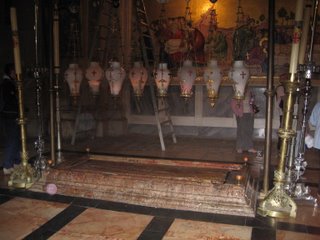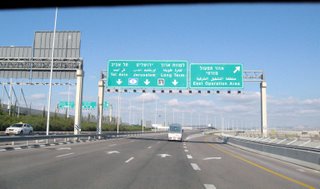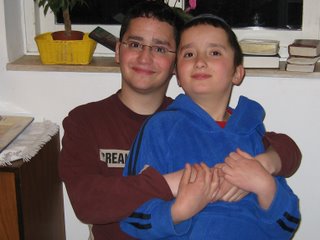And now, from our man in Jerusalem…
Being here in Jerusalem, I feel a little bit like a foreign correspondent sent to cover the election. I’ll take a few minutes to give you the rundown on the election and share a few of my thoughts. As it turned out, the election results were quite interesting, even if many Israelis weren’t interested enough to vote- it was the lowest voter turnout (63%) of any Israeli election in history. If you haven’t heard by now, here is latest expected breakdown of the 120 seats in the Knesset (Israel’s parliament):
Kadima (The party Ariel Sharon founded after leaving Likud): 28 Seats
Labor (The traditional left-of centre party): 20 Seats
Shas (The religious Sepharadi party): 13 Seats
Yisrael Beitenu (A right-wing party catering mostly to the Russian immigrant vote): 12 Seats
Likud (A shadow of its former self after Sharon’s departure): 11 Seats
The Pensioners’ Party (A single-issue party bent on improving quality of life for Israel’s seniors): 7 Seats
National Union- National Religious Party (right-wing, pro-settlement party): 9 Seats
United Torah Judaism: 6 Seats
Meretz (Probably the most “dove-ish” of Israel’s parties):4 Seats
The three main Arab-Israeli parties: 10 Seats
The main story here has been the extremely low (by Israeli standards) voter turnout. Israel used to boast some of the highest rates of voter participation observed in any democracy, routinely hitting 80%. From my perspective, there are a few reasons for the low turnout this time:
1) Election Fatigue: This was Israel’s third election in five years. Due to Israel’s system of proportional representation, it is very rare for a party to win a majority of the Knesset, therefore; in order to govern, winning parties must forge a coalition with their political opponents. The result is two-fold: 1) small parties often have outsized influence on the government if they are needed to reach critical mass for the coalition; and 2) the resulting coalition can be unstable, and will often disintegrate prior to the end of the term. Understandably, given this situation, many Israelis are somewhat jaded about the whole process.
2) A Brand-New Governing Party: The Kadima party is touting this election as a major victory, since only a few months ago, Kadima was only a gleam in Arik Sharon’s eye. The fact is that the 28 seats the party won is way down from mid-campaign polls that had them winning over 40 seats (which would have been a very strong mandate for the new party). I think that as a new party, Kadima did not have the same grass-roots organization and experience that the other parties had in “getting out the vote”. We’ve seen how important this element has been in the US elections, where huge efforts are made to mobilize the party’s power base.
3) Where’s the Passion? Without Ariel Sharon, who had tremendous popular appeal, Kadima relied on the leadership of Ehud Olmert, the former mayor of Jerusalem who just doesn’t have the same appeal to the masses. In truth, the only leader that really seemed to get people excited was Avigdor Lieberman, the tough-talking leader of the Yisrael Beitenu party (whose success was one of the big surprises in this election).
So now, with this luke-warm reception at the polls, Ehud Olmert has the task of putting together a coalition government that will enable him to carry out his platform of unilateral disengagement from the West Bank, a move that will displace roughly 70,000 settlers. It looks like the Labor party will support this aim, but the key question now is where to find the remaining 13 seats needed to govern. Some pundits are speculating that Olmert will round out his coalition with Labor, the Pensioners’ party and one or both of Shas and United Torah Judaism.
The next little while will be very interesting, and I wish I could be a fly on the wall in the negotiation rooms as the political jockeying for places in the government and cabinet seats heats up. It will also be interesting to see the fate of Bibi Netanyahu, after the crushing defeat handed to his Likud party. The 11-seat haul is particularly shocking considering that Likud had been in power nearly continuously for the last 20 years.
People’s reactions to the vote here have been everything from indifferent to fiery. The orange-clad National Union Party supporters may win the prize for being the most vocal. They definitely commanded plenty of attention for their cause supporting the settlements in the West Bank. Perhaps they were loudest because this election was more than anything a referendum on the fate of West-Bank settlements, with most Israelis coming down on the other side.
I think the biggest success of the election was that it went off without a hitch. All of the security forces and the IDF were on high alert for any violence, and there seemed to be very little of it. In fact, the PA seemed to be taking advantage of the international media presence to issue some relatively moderate statements. Is Abbas merely trying to save face? Whether he is sincere or not remains to be seen, but I can hope can’t I?











